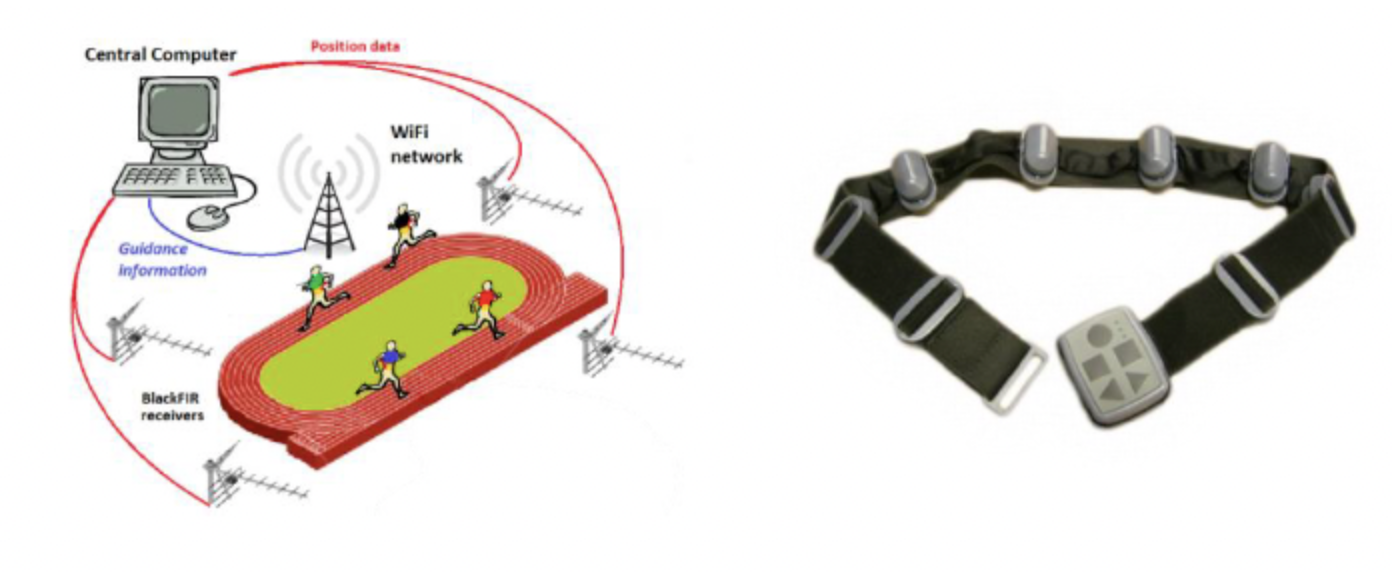BLINDTRACK
Guiding system for visually impaired for running on a track
Ferdinand Kemeth, Sven Hafenecker, A´ gnes Jakab, M´at´e Varga, Tam´as Csielka and SylvieCouronn´e | Fraunhofer Institute for Integrated Circuits, Nuremberg, Germany | Ateknea Solutions, Budapest, Hungary
The BLINDTRACK project is revolutionizing the athletic landscape for visually impaired individuals by providing an innovative guidance system. This technology promotes independence and inclusivity, allowing athletes to navigate tracks safely while engaging in physical activity (Kemeth et al., 2015).
Key Points:
The BLINDTRACK project developed a guidance system for visually impaired runners, enhancing their independence on the track.
The system integrates a real-time locating system (RTLS) that uses radio signals to ensure accurate positioning, allowing for safe navigation (p.183).
This innovative technology relies on estimating the angle of arrival (AoA) and round-trip time (RTT), offering a marked improvement in the accuracy of position tracking compared to previous methods (Kemeth et al., p.185).
Key components include the BlackFIR locating system, a vibrotactile belt for guidance, and a Central Control Unit (CCU) that processes real-time data (Kemeth et al., p.184).
The project aims to create a tailored infrastructure that promotes inclusivity in sports and enables visually impaired athletes to train without assistance.
System mockup (left picture) with the tactile belt (right picture)
Evaluation:
The BLINDTRACK project was evaluated through a measurement campaign at an athletic track, testing various scenarios like walking, running, and cycling (p.186). Key evaluation components included:
Data Collection: Sensors recorded RF signal data, distances, and angles of arrival.
Reference System: An iGPS system provided high-precision reference measurements.
Performance Metrics:
Latency: 440 milliseconds
Data rate: 6.6 Hz
Mean deviation: 0.689 meters
Maximum deviation: 2.60 meters
Position Accuracy: The system's accuracy was validated against iGPS data, leading to planned adjustments for improved performance
Implications for Sprinters:
The integration of technology like BLINDTRACK has profound implications for sprinters, particularly those with visual impairments. This guidance system not only enables independent training but also promotes confidence and skill development in a competitive setting. By facilitating the inclusion of visually impaired athletes in mainstream athletics, this innovation encourages a broader acceptance of diversity in sports. Sprinters can expect enhanced training experiences, improved performance metrics, and ultimately, a more equitable athletic landscape.
Kemeth, F., Hafenecker, S., Jakab, Á., Varga, M., Csielka, T., Couronné, S. (2015). Guiding System for Visually Impaired Running on a Track. In: Cabri, J., Barreiros, J., Pezarat Correia, P. (eds) Sports Science Research and Technology Support. icSPORTS 2014. Communications in Computer and Information Science, vol 556. Springer, Cham. https://doi.org/10.1007/978-3-319-25249-0_6


